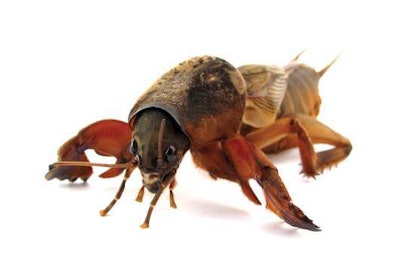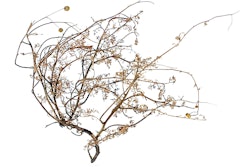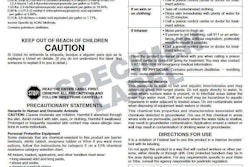
Mole crickets continue to be a problem in the areas stretching from North Carolina to East Texas. Recognized in many of those states as the No. 1 insect pest for home lawns, millions are spent each year trying to control them.
In Georgia alone, one report estimates statewide expenditures on mole cricket damage and control exceeded $14.8 million in a single year.
Despite that, new products for controlling and preventing mole crickets have been slow coming. “The market for this has been really sluggish for the past few years, with the economy where it is,” says Juang-Horng (J.C.) Chong, assistant professor of turf and ornamental entomology at Clemson University. “And we really don’t see that there is anything new on the way.”
While there may be nothing new on the horizon for mole cricket control, there are a handful of products that are completely capable. The key is knowing when to use them and keeping diligent track of mole-cricket populations.
Map it out
Mole crickets (southern, northern and tawny) prefer sandy soils that they can tunnel in, and this tunneling on its own can harm turf by loosening soil around the root system – which causes the roots to dry out.
However, it’s the tawny mole cricket that also feeds slightly below the soil surface on roots and even on shoots that can really wreak havoc on turf. Obvious damage to turf will depend on the length and degree of infestation, according to Chong, but tunnels are a sure indicator of mole crickets.
“There are really not any other creatures that would create the same tunneling of mole crickets,” Chong says.
Keeping a record of the location of mole crickets will aid in efficacy of treatment. It’s unlikely they will infest a large contiguous area, so mapping the affected areas will aid in treatment later on, especially in instances where you can wait until summer and treat nymphs that are the most vulnerable to controls. One of the best ways to determine the presence of mole crickets is to perform a soap flush.
“Since the majority of nymphs hatch in June and July (earlier farther to the South), there will usually not be any visible mole cricket damage (during this time),” says Rick Brandenburg, professor of entomology at North Carolina State University. “This is the time when a soapy water flush is an effective tool to monitor cricket egg hatch and abundance in turf.”
He recommends using lemon-scented detergent for this, which seems to work best. Using two tablespoons of dish detergent in three gallons of water, soak a small area (3 x 3 feet) of turf, and mole crickets will pop up within a few minutes because the detergent irritates them. “You’ll be able to see how many there are and how big they are, too,” Chong says.
Cricket control
Mole crickets are hard to control. Both the nymphs and adults are a threat to turf, and gaining control of both, ultimately, is best done by targeting them in the nymph stage in June and July instead of the adults in the spring.
“Spring treatment is not recommended, but some population reduction is possible,” Brandenburg says. “Unless the area is very isolated, spring treatments will have only a slight impact on reducing the number of adults that come into the area to lay eggs.”
Look for products containing these active ingredients: carbaryl, fipronil, imidacloprid and indoxicarb, which have proven effective on mole crickets, as well as pyrethroid products.
“Adults are just less sensitive to insecticide treatments,” Chong adds. “The nymphs are much easier to control using a product like Talstar (bifenthrin). But adults, they will hardly touch it. For adults, you have to whip out the big guns, like fipronil, to deal with them.”
Lights out
Reducing the chances of attracting mole crickets to turf could be as easy as flipping a switch, according to Chong. “One thing that seems to make a little difference is light. Mole crickets are attracted to light, and leaving lights on outside at night can increase your chances for mole crickets — grubs, as well,” he says. Plus, it can mess up turf physiology, too.
While porch lights and home spotlights don’t create enough light to trigger photosynthesis, it causes turf to burn more sugar over the long term, Chong adds.
Tracking temperatures
Watch out for warmer winter temperatures, like those experienced in 2011-2012. They appear to have an impact on mole cricket behavior and could mean additional monitoring for lawn-care professionals.
“We don’t really have any data for it, but from my observation, winter temperatures make a big difference,” Chong says. “When it freezes, this drives mole crickets further underground, where they become inactive. Without the freezing temperatures, they stay active all winter long, and damage can carry over into next spring.”









